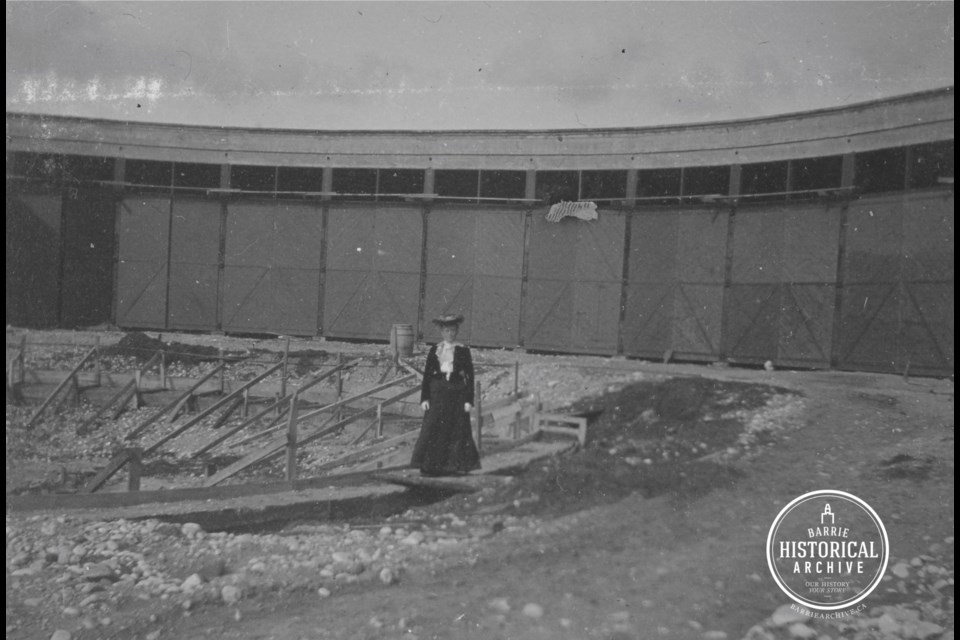This ongoing series from Barrie Historical Archive curator Deb Exel shows old photos from the collection and one from the present day, as well as the story behind them.
The roundhouse
The early 1900s saw a flurry of activity on the south shore of Kempenfelt Bay.
Thanks to a fixed tax assessment in 1903 for all its Barrie properties, the Grand Trunk Railway began a significant expansion of the Allandale rail yards. A busy depot since the 1850s, the village of Allandale was about to experience a major boost to the local economy.
A number of projects were initiated.
In 1904, a water tower for the steam engines was constructed behind Webb’s Jewelry store at 8 Essa Rd. and bigger chutes were built to fill the coal cars. To the east of the coal chute, a compound was built to support the servicing and maintenance of the locomotives. Master Mechanic’s and Stores, a poured-concrete building, was erected for office staff and a parts department. A machine shop and electric lighting plant were built as well. The Master Mechanic’s building is now the City of Barrie’s Southshore Centre and is a designated property under the Ontario Heritage Act.
Next to the Master Mechanic’s building, work commenced on the building of a roundhouse. Roundhouses were designed to service steam locomotives. As early steam engines could only move in one direction, most roundhouses also had a turntable nearby to swing the locomotive around or manoeuvre them into the bays of the roundhouse, which radiated around the turntable.
Railways were the key to moving products and resources, such as timber, as well as people, so keeping the locomotives operational was critical. Trains needed to be cleaned of debris caused by burning coal and their parts had to be regularly inspected, maintained and repaired in order to keep the wheels of the railway business turning. This also meant jobs — not only crews for the trains, but also the numerous pipefitters, boilermakers, blacksmiths and other workers who toiled in the roundhouse and rail yard.
Construction sites, whatever the era, will always attract a crowd, and the building of a massive roundhouse and turntable drew many people to the rail yards for a look.
Reporting of the day stated the diameter of the roundhouse would be 332 feet and its foundation was five feet below the rails and two feet wide. Above ground, the 20-foot walls would be 13 inches thick. More than 16,000 bags of cement would be used to build the enormous structure. It was estimated about 50 men were contracted to build the roundhouse, with additional teams hired to grade and level the entire yard to bring it to the height of the rails in the roundhouse.
The roundhouse would have 28 stalls measuring 20 by 80 feet each. In the centre of the massive roundhouse would be a 70-foot air-operated turntable.
It’s no wonder hundreds of folks, including the Warren family of Mary Street, came to view the construction of this colossal building and visit the new rail yards, which debuted to the public in 1904.
Sadly, few roundhouses have survived after the evolution to diesel engines and other changes in the railway industry. The Allandale roundhouse was demolished and most of the turntable was removed in the late 1980s. The last few remaining remnants and relics of the steam locomotive era were stripped from the former rail yards to make way for the development of Military Heritage Park, which was completed in 2017. As a remembrance of the great monument of railroad history that once stood on these station lands, a round, concrete band to represent the walls of the former roundhouse was placed in the plaza of the park.



